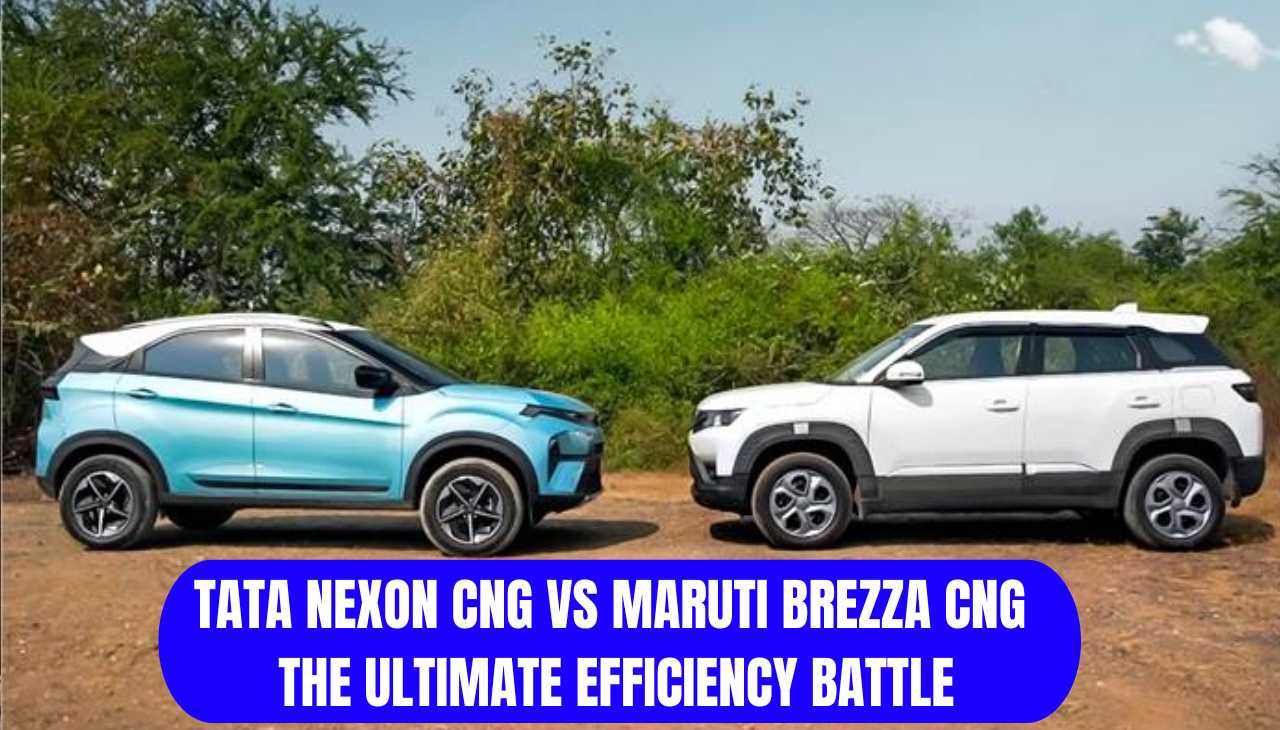Tata Nexon CNG vs Maruti Brezza CNG : Tata Motors has expanded the Nexon portfolio with the addition of the iCNG version, which is sold right alongside its turbo-petrol, diesel and electric avatars. The iCNG comes with a substantial price range, retailing from Rs 9 lakh to Rs 14.60 lakh. The real game-changer here is that it becomes the one and only adorned an on-offer turbo-petrol powertrain with CNG (compressed natural gas) and mated to a 6-speed manual transmission.

To see how the Nexon iCNG stands on the charts of real-world efficiency, we’ve matched it up against its direct, time-tested competitor, Maruti Brezza S-CNG, which comes in the price range of between Rs 9.29 lakh and Rs 12.09 lakh.Neither car benefits from auto engine stop/start or drive modesMore than 770Kg lighter than the more heavy Nexon.Brezza and Nexon CNG have 60L and 55L tanks respectively
While Nexon iCNG comes with its turbo-petrol+CNG option with 6-speed manual, as per claim it generates 24km/kg; Maruti Brezza S-CNG comes with naturally aspirated petrol+CNG 1.5L combination paired with 5-speed manual, the claimed figures are 25.51km/kg. In our city fuel efficiency test, the Nexon returned a figure of 13.4km per kg, while the Brezza’s 20.4km per kg figure came across as quite commendable. Clearly, in stop-go situations with no-show on-boost and off-booster ranges the Nexon’s turbo-petrol motor has a substantial cost on its effectiveness. Also, no auto engine stop-start tech or Eco drive mode makes the difference in check gas consumption
Both cars made their respective claims on the highway, too The Nexon managed 23.7km/kg and the Brezza returned 25.5 km/kg. At open-road speeds, the Nexon joins the easy-sipper club, with its sixth gear spinning it at a relaxed 2300rpm at 100kph; the Brezza’s motor spins at closer to 2900 in the fifth. Nonetheless, Brezza’s 1.5-litre unit is inherently more fuel-efficient and its lighter kerb weight of 1255kg (Nexon’s is 1398kg) comes into the picture to offer higher fuel efficiency.
Fuel Economy Testing by Autocar India
Refilling CNG tanks is more complicated, and a number of variables enter into the equation, especially ambient temperature and pump pressure, so we ditched our usual tankful to tankful methodology. We had their CNG tanks empty and put 2-kilograms of CNG in each of them for our real-world test. “Then we drove them in urban contexts until they … ran out of gas.” Then we did it again for the highway test. These cars were driven only in CNG mode for the course of our drive.
Tyre pressures were set according to manufacturer recommendations. The cars are cost at fixed city and highway loops in and round Navi Mumbai, with specific common velocities being taken care of. During the tests itself, there is only one person in each car who operates the aircon and other electricals like the audio system, indicators and wipers, when necessary, just like a normal user would. Regular driver swaps also mitigate variations in driver patterns. “Not only is our testing data consistent, but it also provides users with a genuine preview of what they can expect in a real-world environment.”
